Words and images Mede Studio
Interview and editing The Kanto team
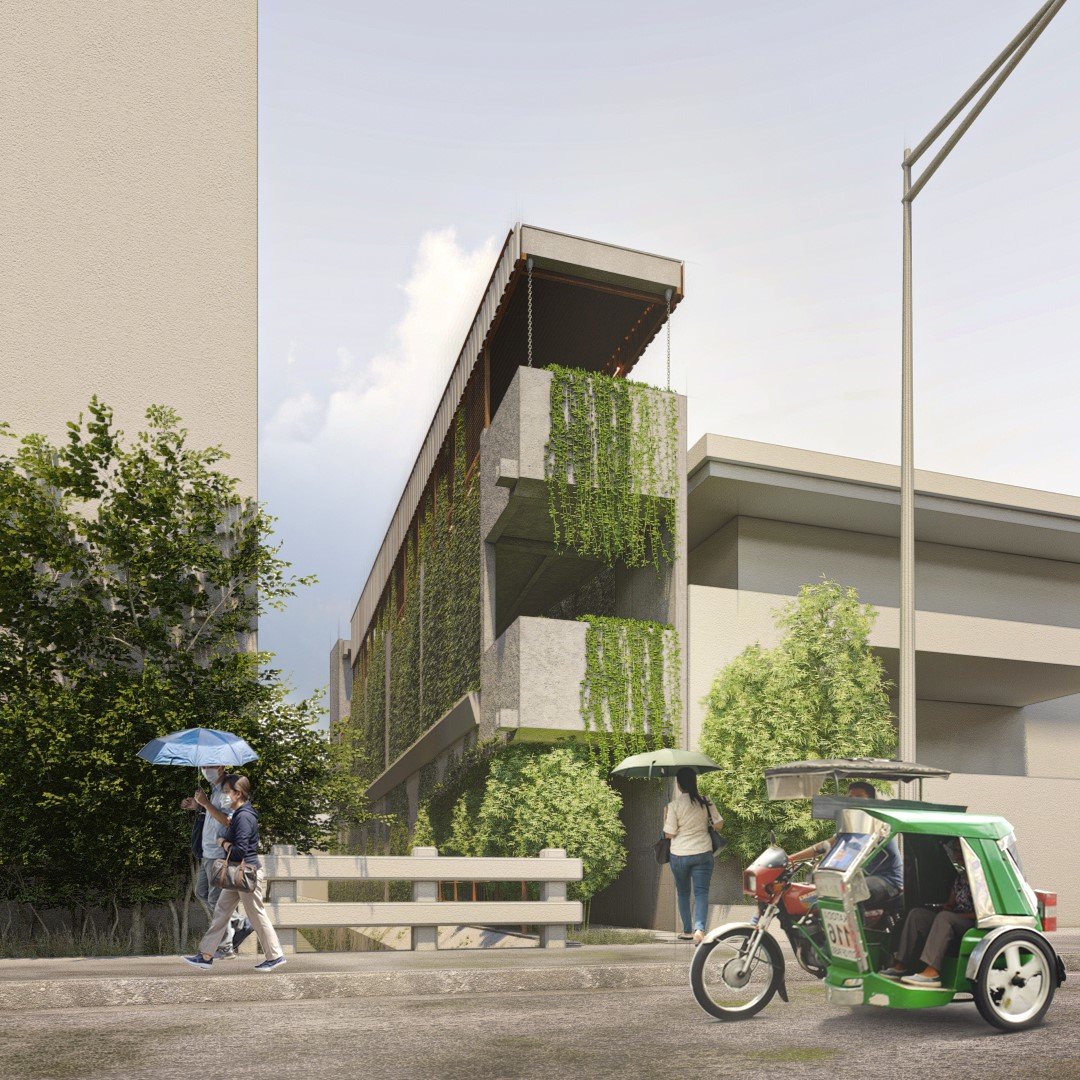
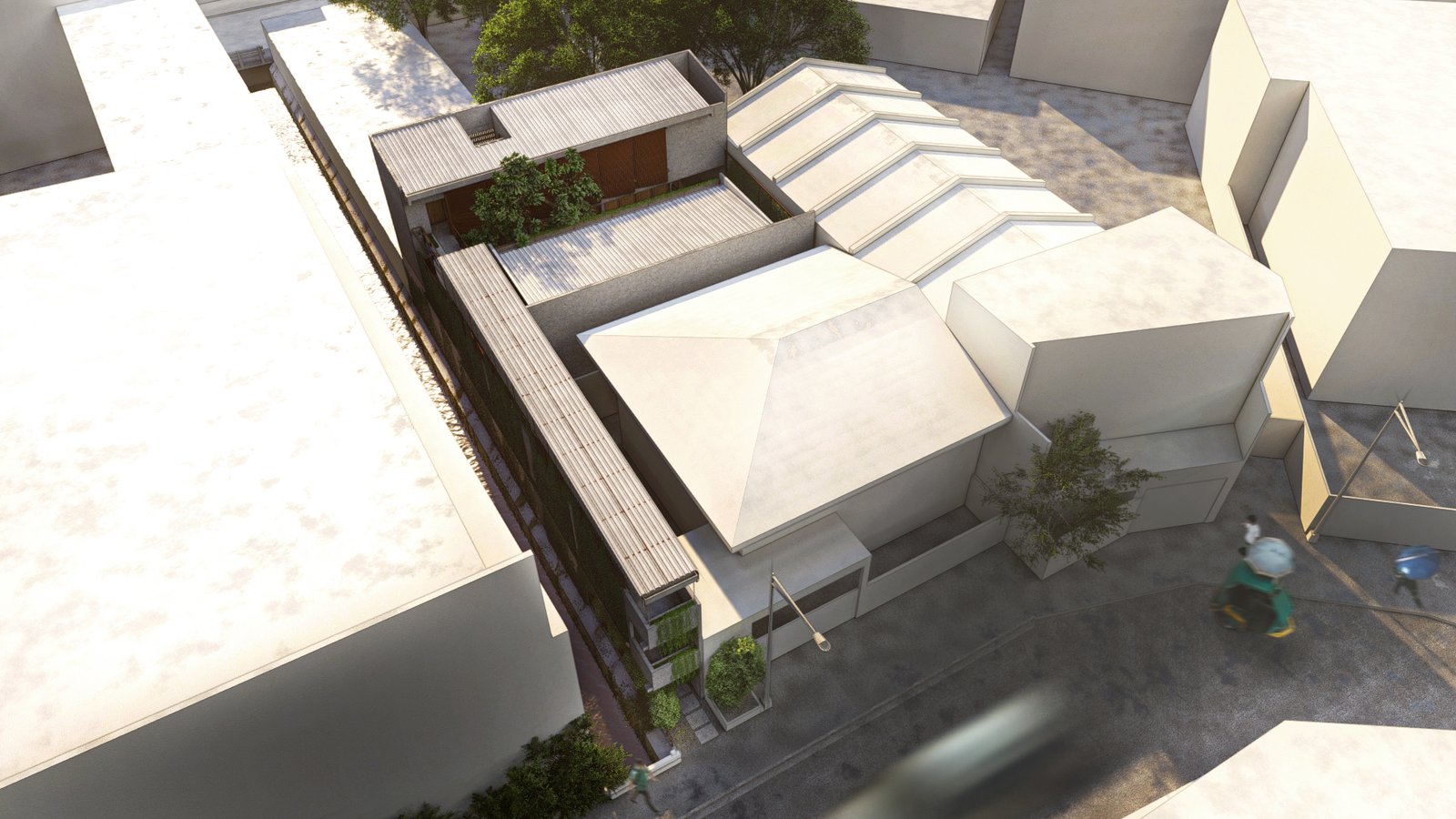
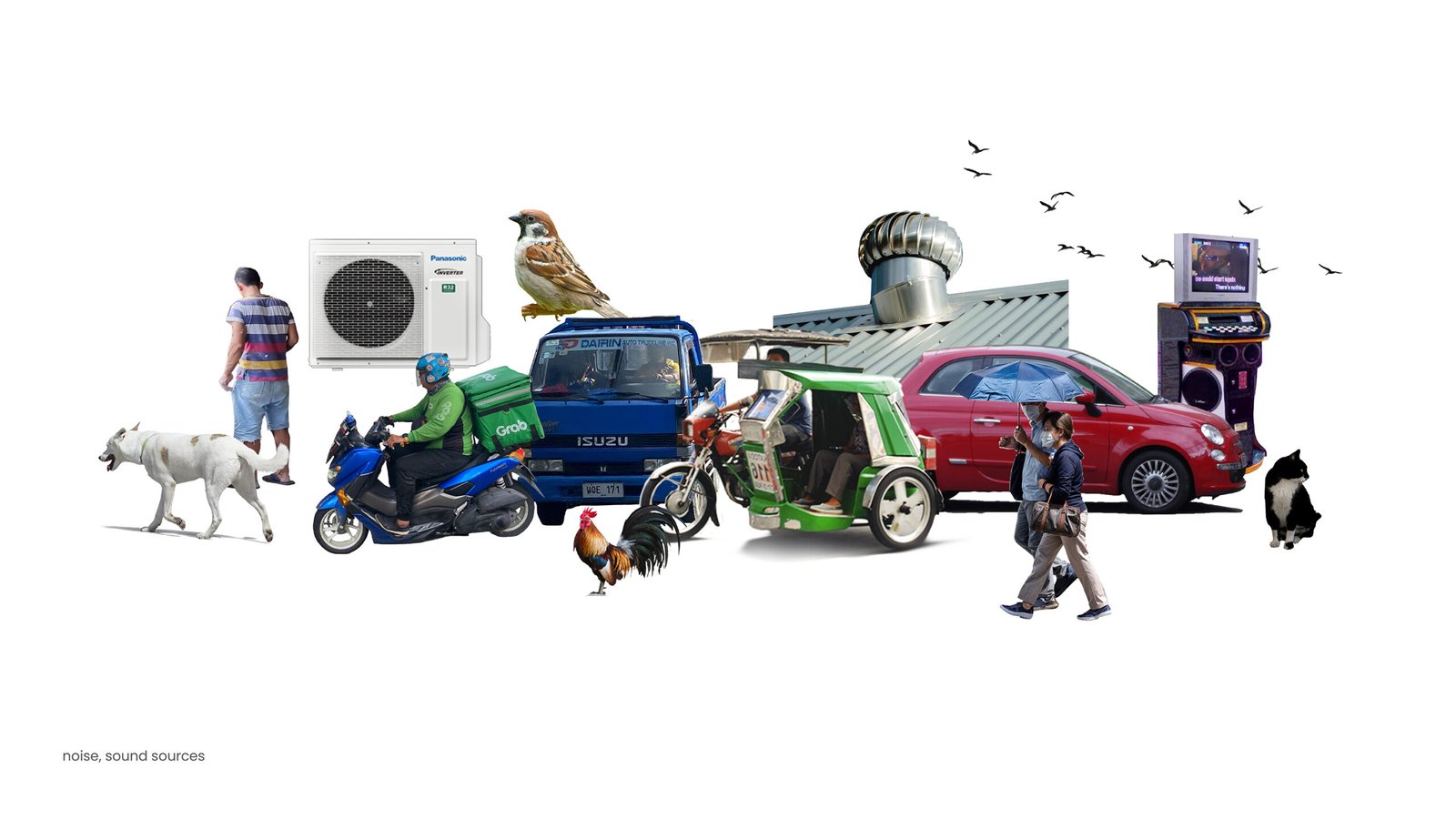
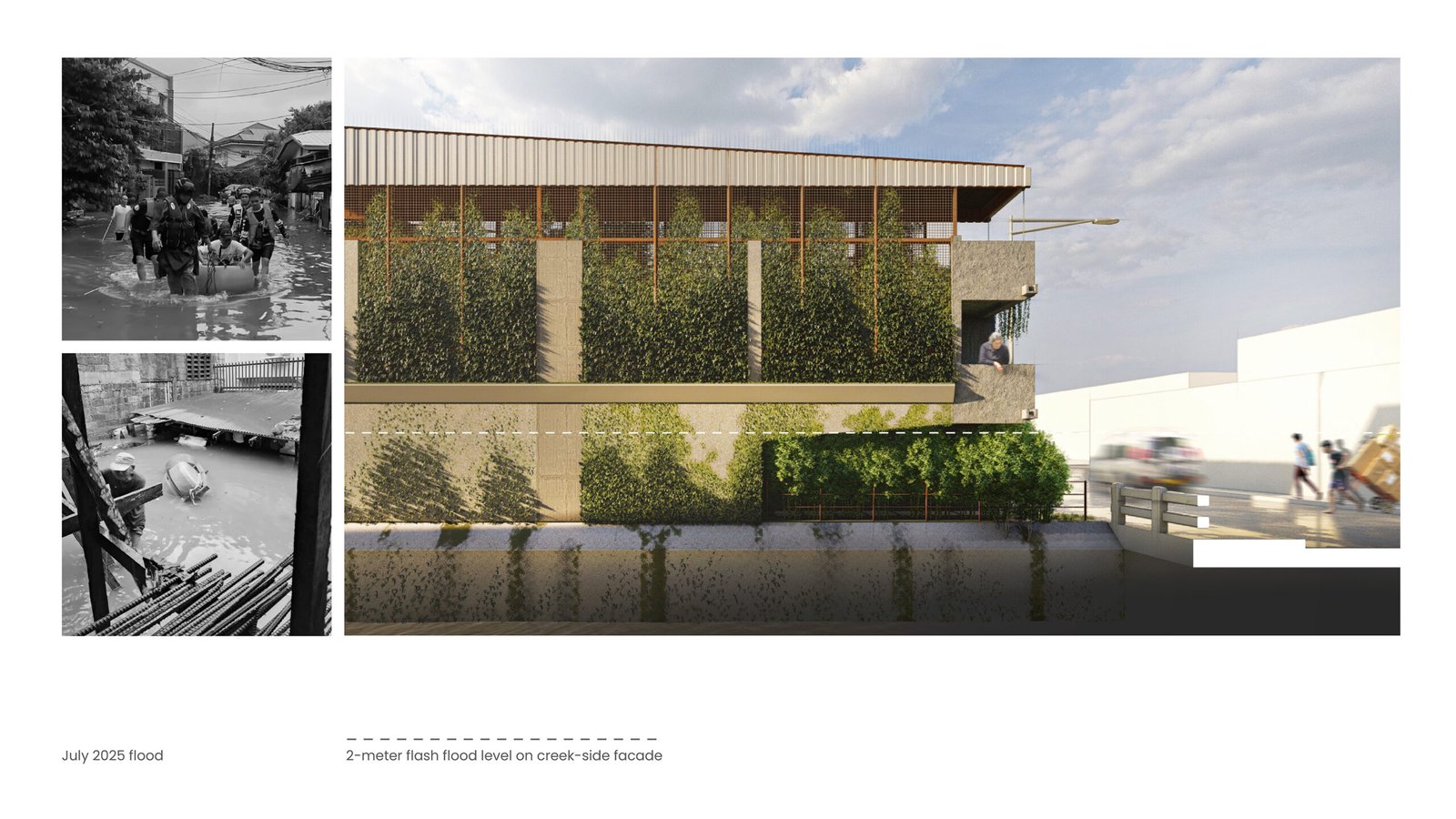
Limlim Mindfulness Institute by Mede Studio
Shortlisted under Future Projects, Education Category, WAF 2025
The Limlim Mindfulness Institute is a new learning environment offering structured mindfulness programs for city dwellers and community care workers, including public school teachers, social workers, and nonprofit volunteers, who often carry heavy responsibilities with limited support. Their work directly serves underserved communities and young students, making them ideal recipients of habits and practices that nurture kapwa, the Filipino ethic of shared humanity expressed through kindness, compassion, and care.
Strategically located in a neighborhood in Quezon City, the most populous city in the Philippines’ capital region, the institute fills a gap by making mindfulness accessible to the community it serves—unlike retreat centers in remote areas. Situated in a densely populated barangay between homes and a creek, the institute leverages site constraints as cues for presence and purpose, striking a balance between urban conditions and a private sanctuary. The architecture curates spatial sequences, sounds, materials, and transitions that invite stillness and a sense of presence. Each element encourages awareness of sensation and thought. Interior and exterior spaces act as co-teachers, gently guiding participants into a mindful state.
Entering through a narrow passage from the road, the sound of rustling bamboo leaves and rhythmic clacking allows the city to fade. The courtyard reveals a tree original to the site, retained as the institute’s symbolic center and natural anchor. It offers a quiet symbol of resilience, growth, and care. A waterfall masks neighborhood sounds, creating a soothing soundscape. The rest of the ground floor is reserved for rest and activity during the dry months, as the site sits in a two-meter flood zone. Interior spaces are raised on the second floor, accessed by a ramp that encourages both physical and mental deceleration. The meditation hall, dorm rooms, and support facilities emphasize material simplicity, grounding through floor seating and carefully calibrated openings for ventilation, light, and mental anchoring.
The client, who is also the head teacher, will conduct subsidized programs for community beneficiaries and develop an evidence-based mindfulness curriculum tailored to Filipino urban life. Two pilot programs have already been delivered at Capiz National High School and Culiat Elementary School. The next session is scheduled to take place at Tandang Sora National High School, within the institute’s community. Limlim is an incubator for inner change—built to sustain those who sustain others.
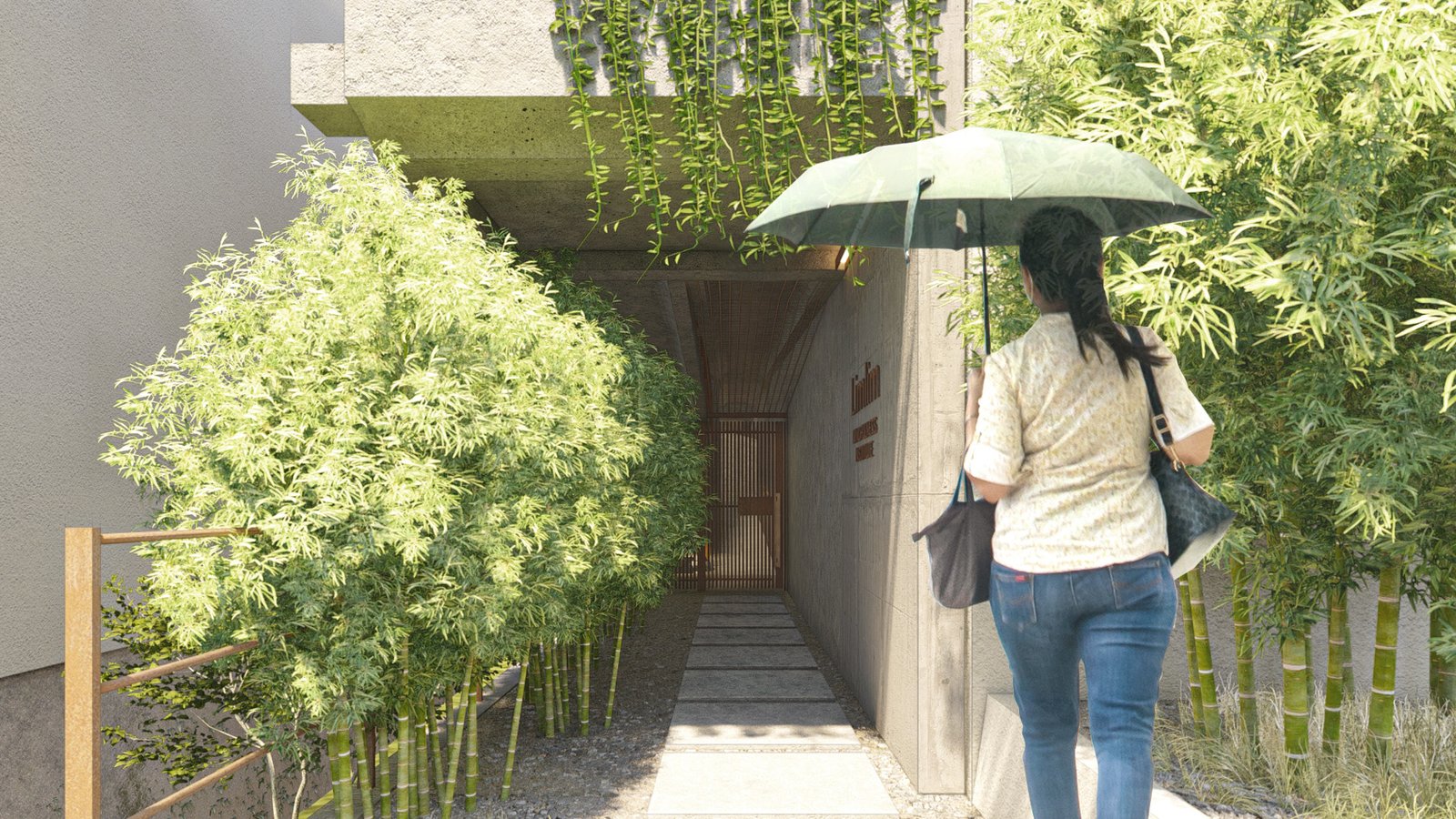

Hello there, Mede! Congratulations again for making it to the WAF shortlist! It’s admirable what the institute seeks to do, but architecture can only go so far. Where do you draw the line on what the space can and can’t do for mindfulness? And when the need is so abstract, what metrics help you judge success?
Eldry Infante and Martin Quiambao, Mede Studio: Hello, Kanto! Thank you for the opportunity to talk about Limlim Mindfulness Institute. Yes, architecture can only go so far—but its potential to heal and comfort is what excited us as designers. The Institute’s “curriculum” is composed of evidence-based programs with a set of activities that enable individuals to develop a mindfulness tool set tailored to their specific needs, such as relapse prevention for mental health problems, stress and emotional regulation, or general well-being improvement. These tools are meant to integrate seamlessly into daily life, not as scheduled activities, but as natural responses to stressors in the environment or the mind.
Beyond being architects, the client enlisted our help to be co-teachers of his mindfulness programs through space. So, our goals focused not only on making the spaces conducive for the programs, but also on providing a guiding hand or being a second teacher. We did not draw boundaries but focused on filling gaps. Like, if you’re doing a breath exercise with your eyes closed, what will make you feel comfortable? You might feel more relaxed with a good indoor temperature, a constant breeze, and a gentle floor to sit on. When you finally open your eyes in a more relaxed state, you might want to continue that light feeling while looking at a window full of greenery and sunlight. These solutions aren’t just intuitive but are backed by studies on how natural elements and temperature affect mood and cognition. Like how a simple green space viewed from a window can have positive psychological effects based on the Attention Restoration Theory. Or how the color green is relaxing because its wavelengths are short, so the eyes don’t strain by looking at it (that’s why school blackboards are green).
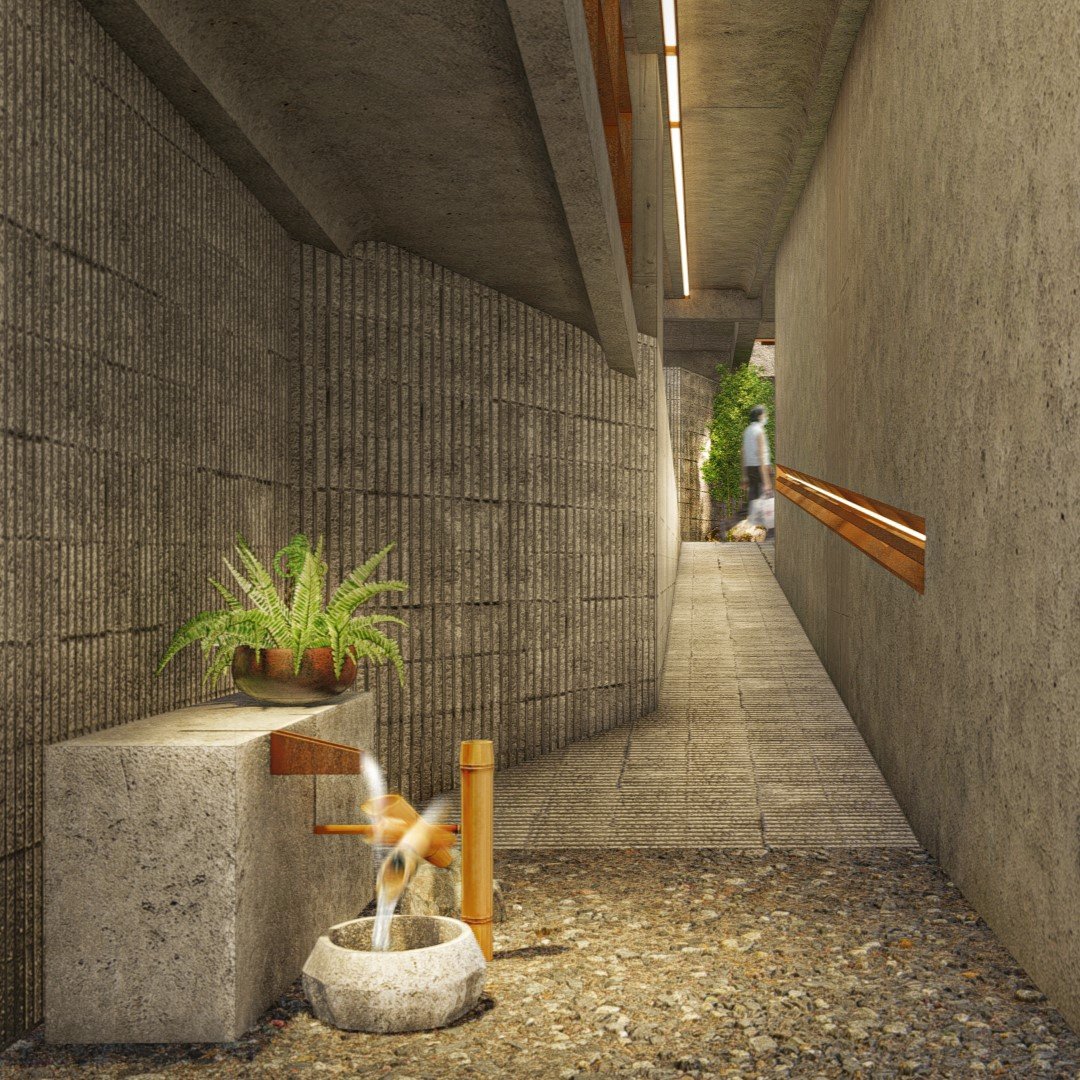

The goals of the Institute may be abstract, like calming, healing, or rejuvenating, but we’re fortunate to have found studies and a guiding client in calibrating our spaces. We implemented building features that are, in a general sense, low-tech or simple, considering we need to build within budget, such as properly placed and sized fenestrations that allow for constant stimulation brought by natural elements. This is done throughout the Institute to ensure that there is always a possibility for focus and presence, whether you’re inside the meditation hall, resting in your dorm room, having lunch, or contemplating in the afternoon.
The Filipino value of kapwa—shared identity and mutual care—encompasses Limlim’s programs. It is the value found in shared experiences, learning with others, and building empathy. Another abstract variable we implemented in the physical space is by making the structure communal by design. You enter through a shared courtyard; the dorm rooms are shared, and supplementary spaces, such as the hallway, facilitate interaction. We envision Limlim as a shared and humble breathing space within a city that lacks spaces for meaningful interaction.
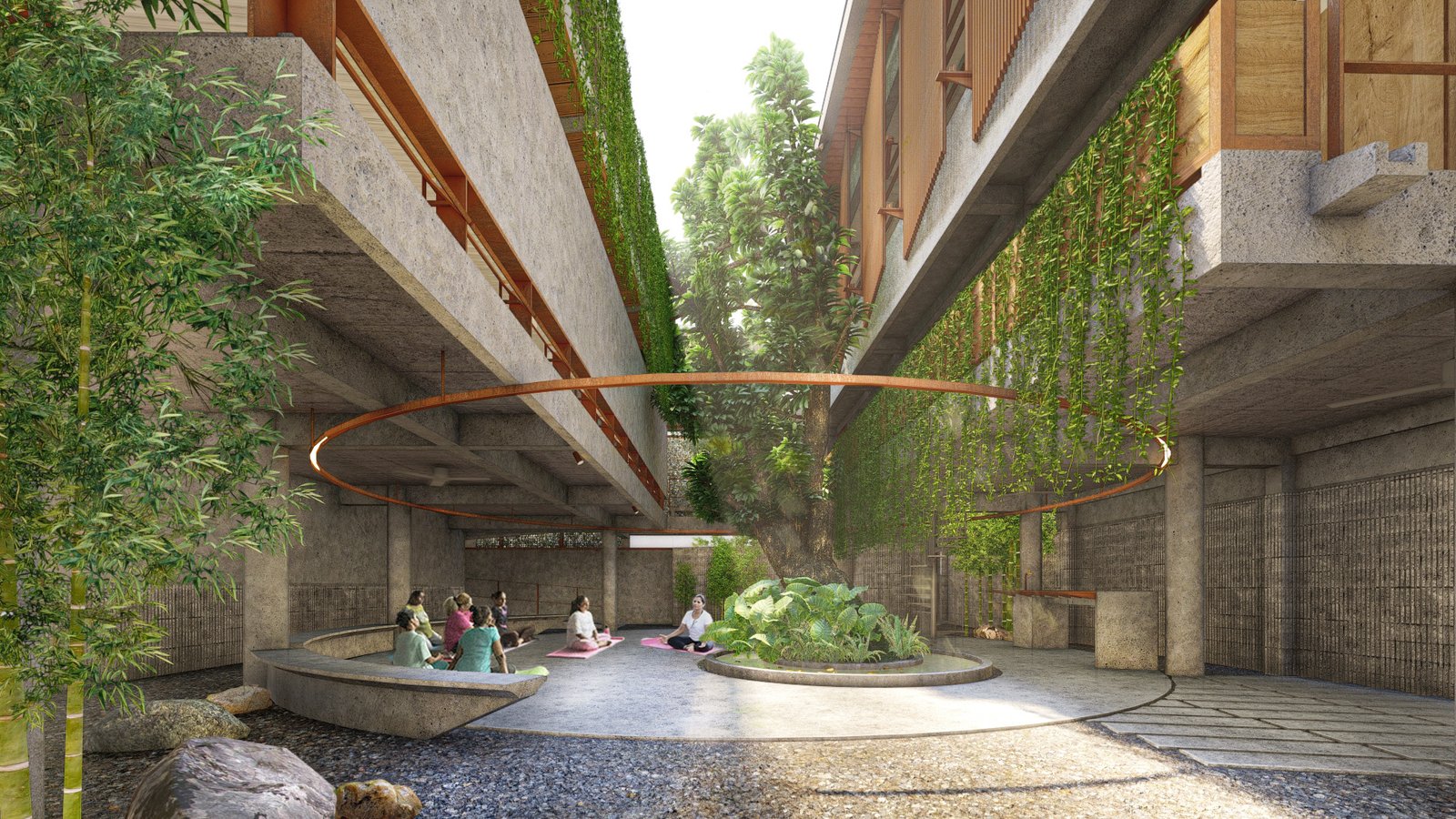

“We envision Limlim as a shared and humble breathing space within a city that lacks spaces for meaningful interaction.”
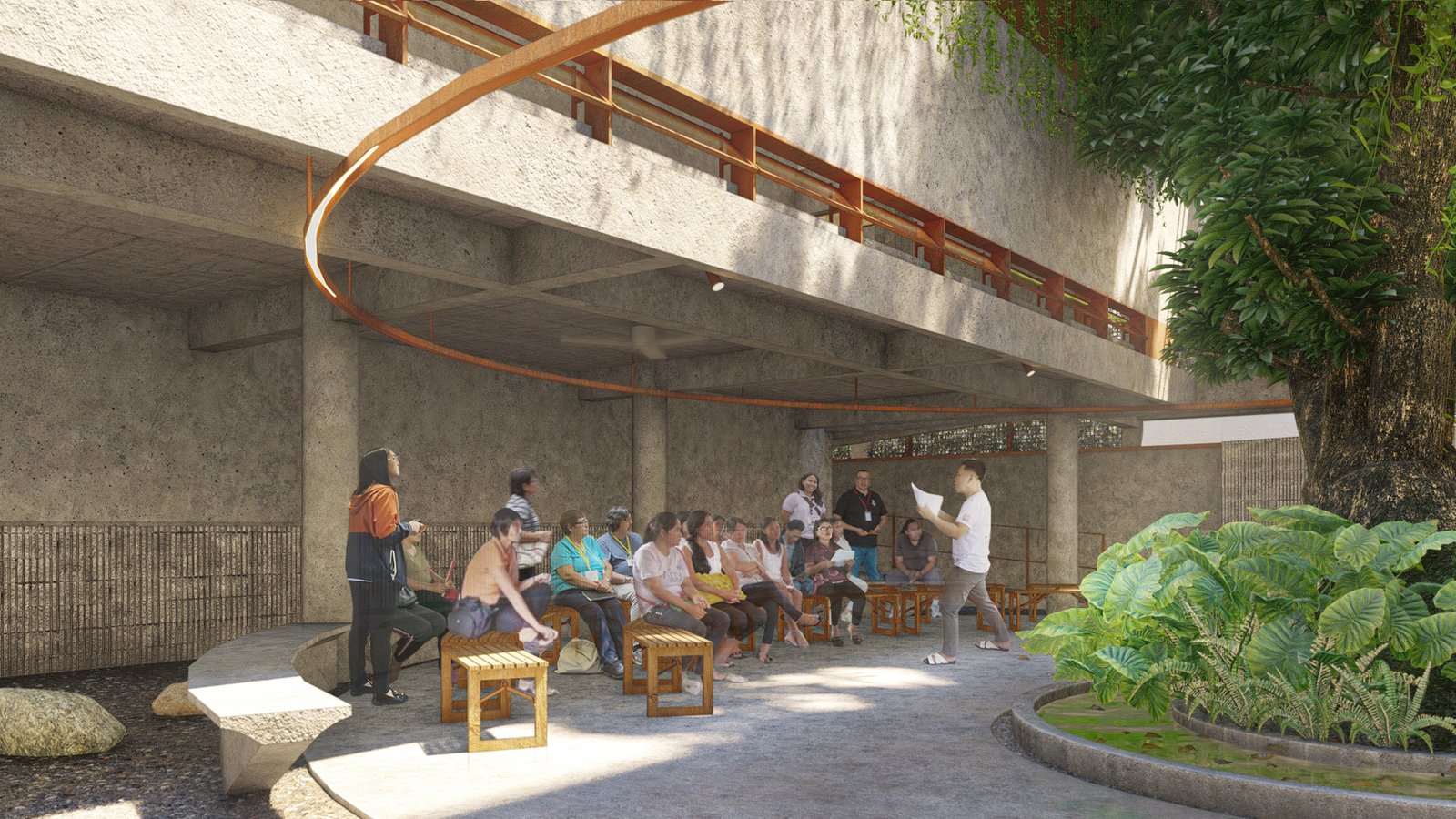
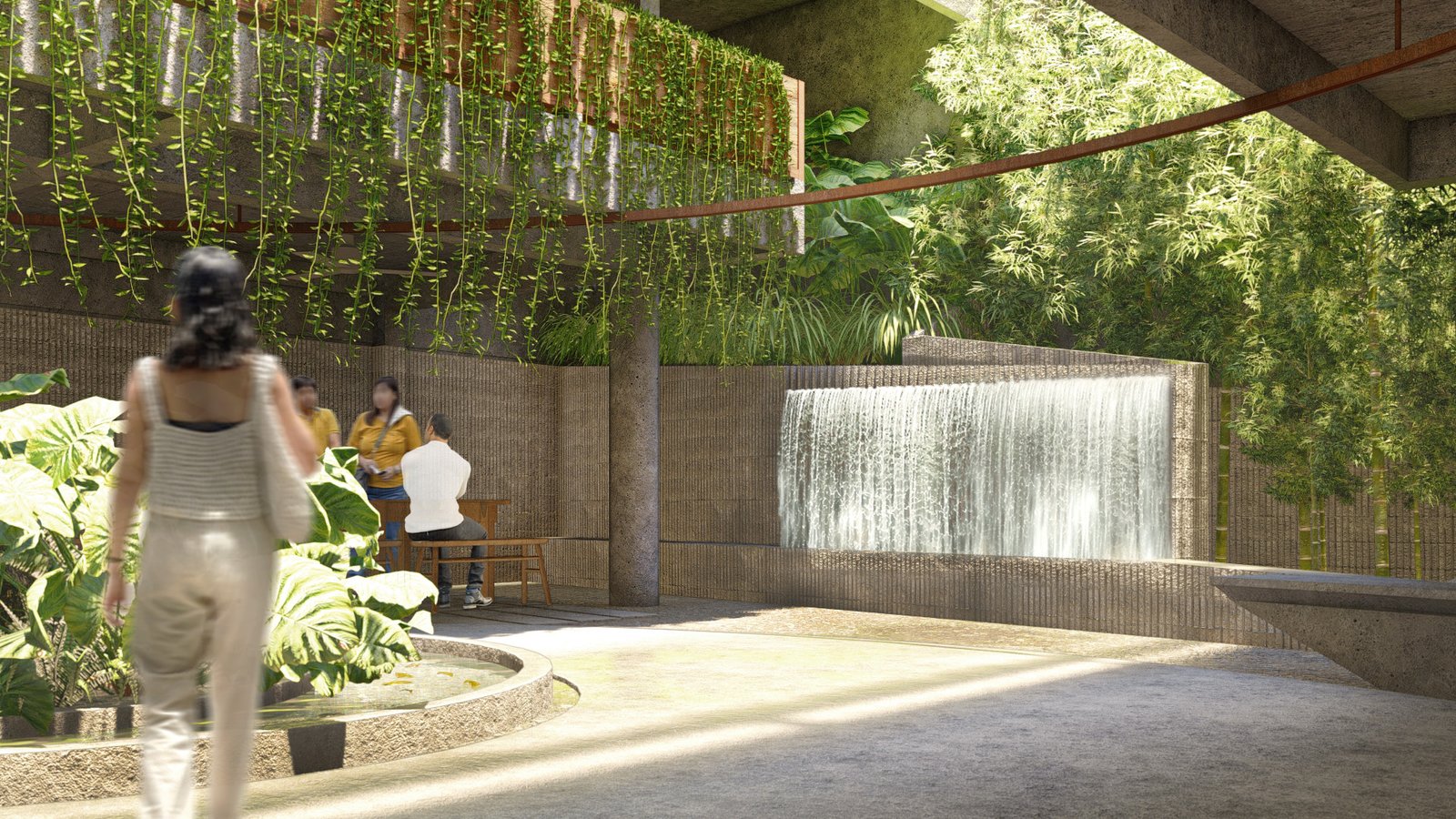
Mindfulness is a relatively new concept in Philippine society. How did you design the space as both an introduction to the practice and something grounded in its local context?
Mede Studio: The Institute’s mission is to make mindfulness accessible, comprehensible, and achievable for urban Filipinos. It is targeted at public school teachers, social workers, NGO volunteers, and working Filipinos. In essence, Limlim is already positioned as an introduction to mindfulness for the people who most need it. These are the people who need to be taken care of before they can take care of others.
In terms of design, we focused on making the structure as simple and hardworking for its location. As a consequence of the budget, we wanted every Limlim student to realize that mindfulness can be everywhere, and it can be cultivated in the simplest of spaces, even within the grit of their city.
We treated the parcel’s tight entry as a transitional space from street to courtyard, where a mango tree, original to the site, welcomes every student as an object of focus, groundedness, and a device to provide a comfortable outdoor temperature. No indoor spaces are positioned on the ground floor because the site sits in a flash flood zone. The cutouts and porosity of the building form are informed by our local trade winds and the wind funnel the creek provides on one side of the property.
One of our most interesting challenges was neighborhood noise. The site, located in Barangay Tandang Sora, Quezon City, is prone to linear and point-source sounds—such as vehicles, conversations, karaoke, and the mechanical hums from outdoor air conditioning units. But as the programs are geared toward people who live in the city, the structure allows a level of noise to penetrate its spaces. Being able to focus despite distractions and recapturing your attention is a valuable skill for urbanites. But we also made sure that we can calibrate this by introducing a waterfall in the courtyard to mask exterior noise.
Limlim is a departure from mindfulness retreat centers commonly found in picturesque, far-flung areas or exclusive locations. It is set to thrive within the realities of the city, not to completely sequester individuals, but to train them to focus and regulate emotion where they live and work.
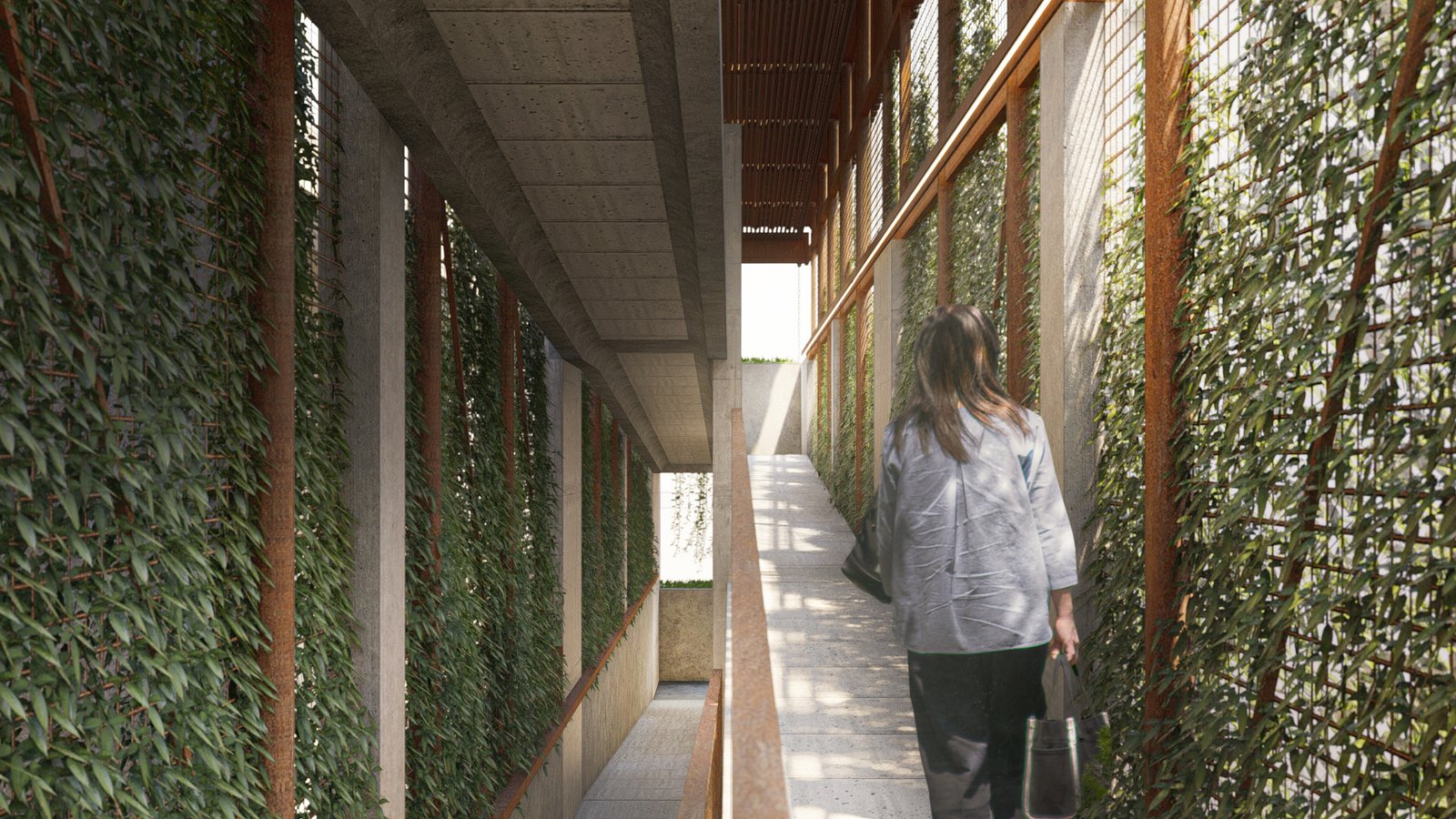
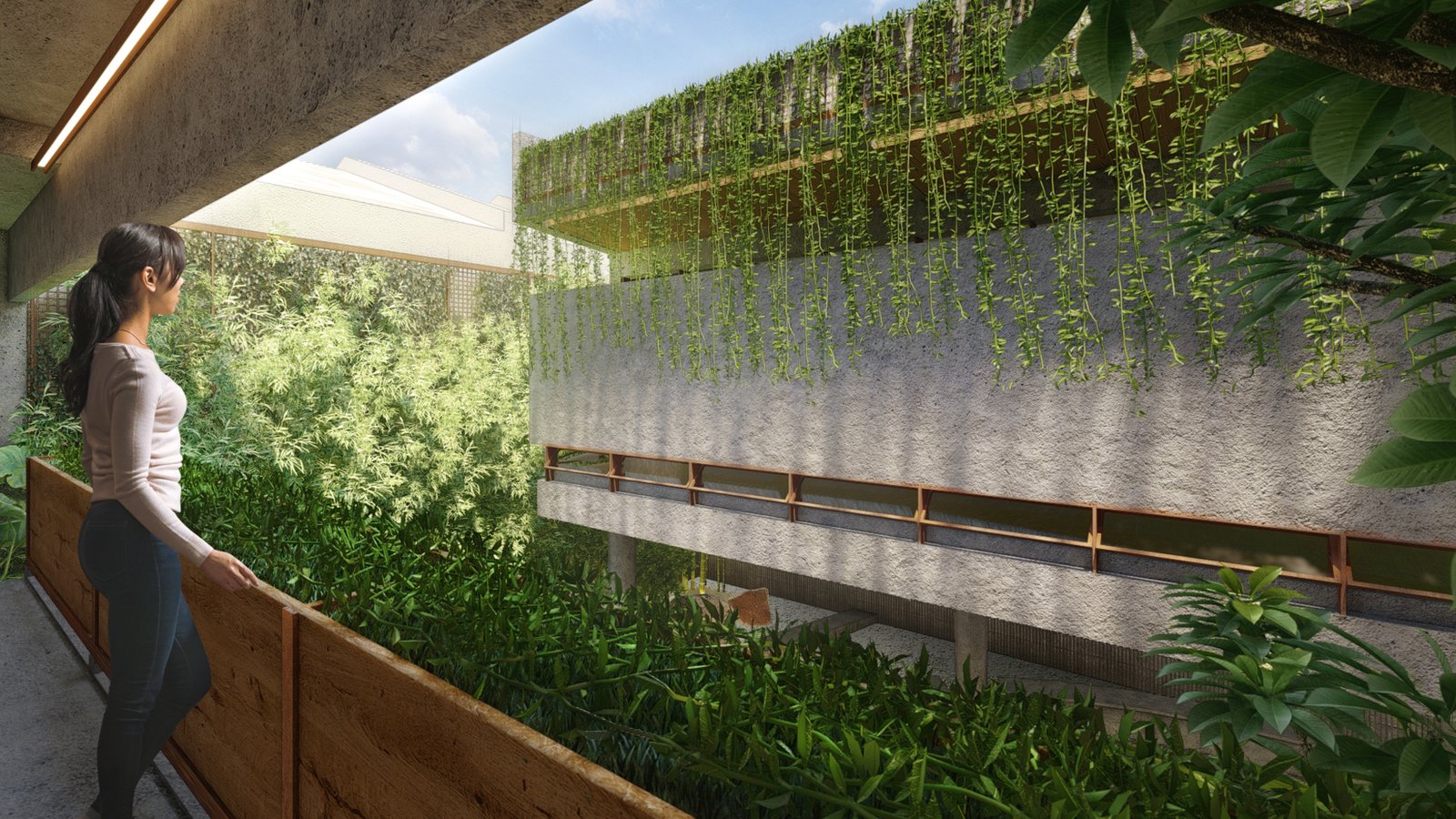
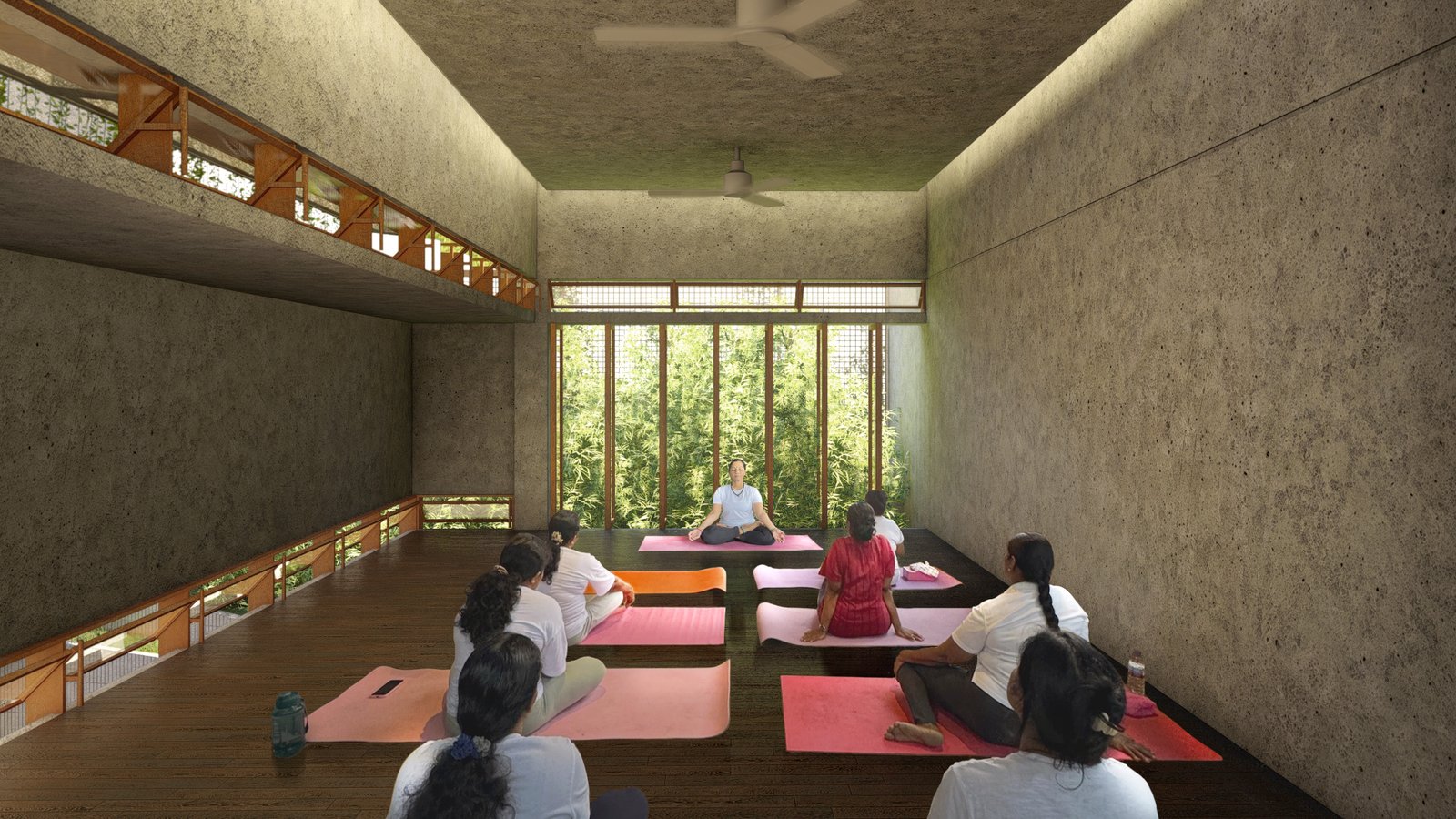
Do you see the current Limlim model as replicable in other dense urban communities? What challenges or changes would replication demand?
Mede Studio: Limlim’s program is responsive to its site and the conditions of its neighborhood. That level of program malleability makes it ripe for replication. But for that to happen, we need to continue seeing urban conditions as opportunities for creative and mindful solutions. The client saw the potential of the mango tree in the middle of his soon-to-be property as something valuable. Others might see it as something that robs precious real estate, especially since it sits in the middle of an already small and irregular lot. We saw the tight entry as an experiential tunnel from the city into a breathing space, while the ramp that covers it acts as a bridge for relief operations. Each site has a unique set of conditions. So, while replication won’t be 1:1, the design values established here at Limlim can inform the creation of additional spaces for mindfulness in dense urban settings.
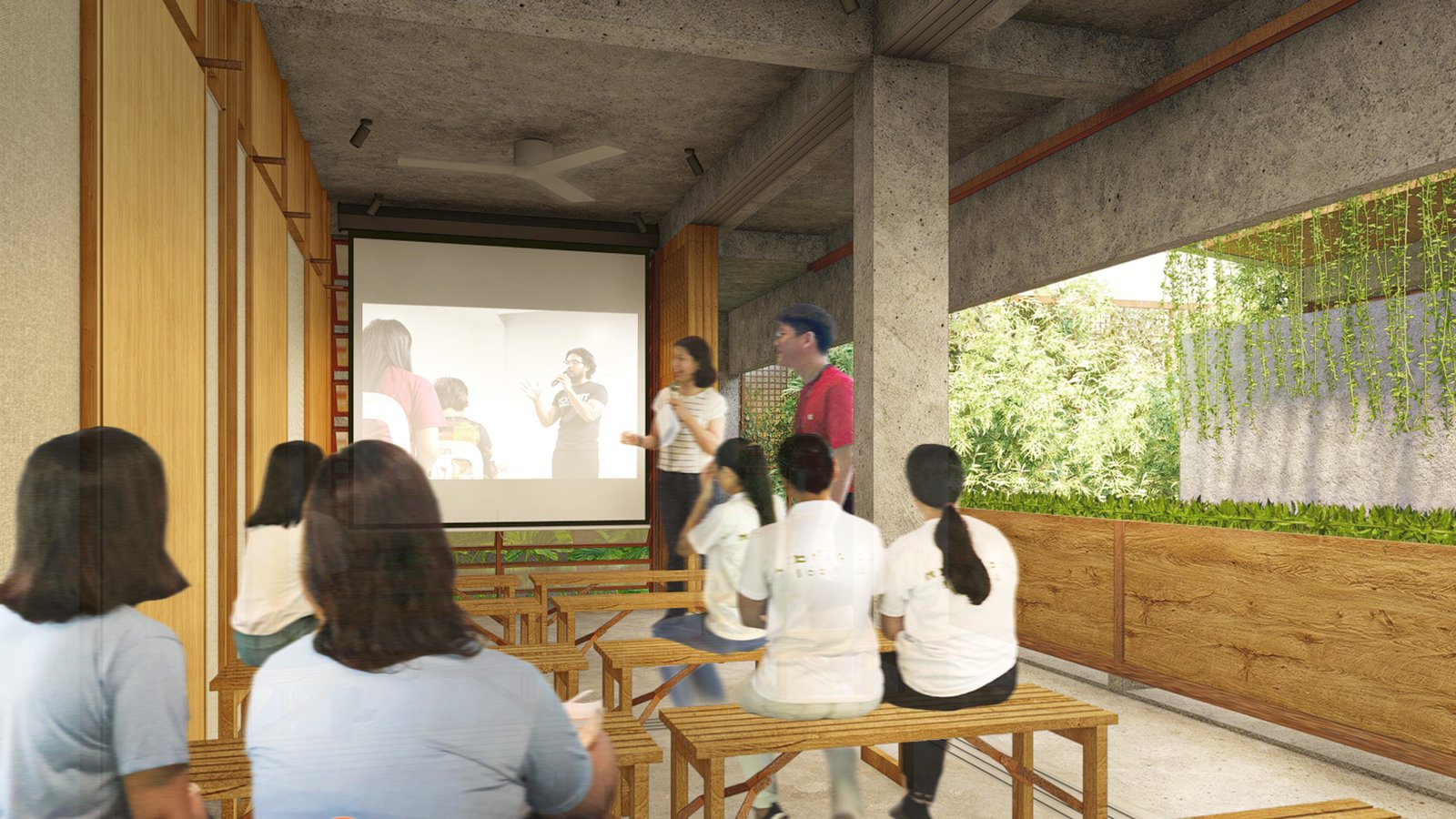

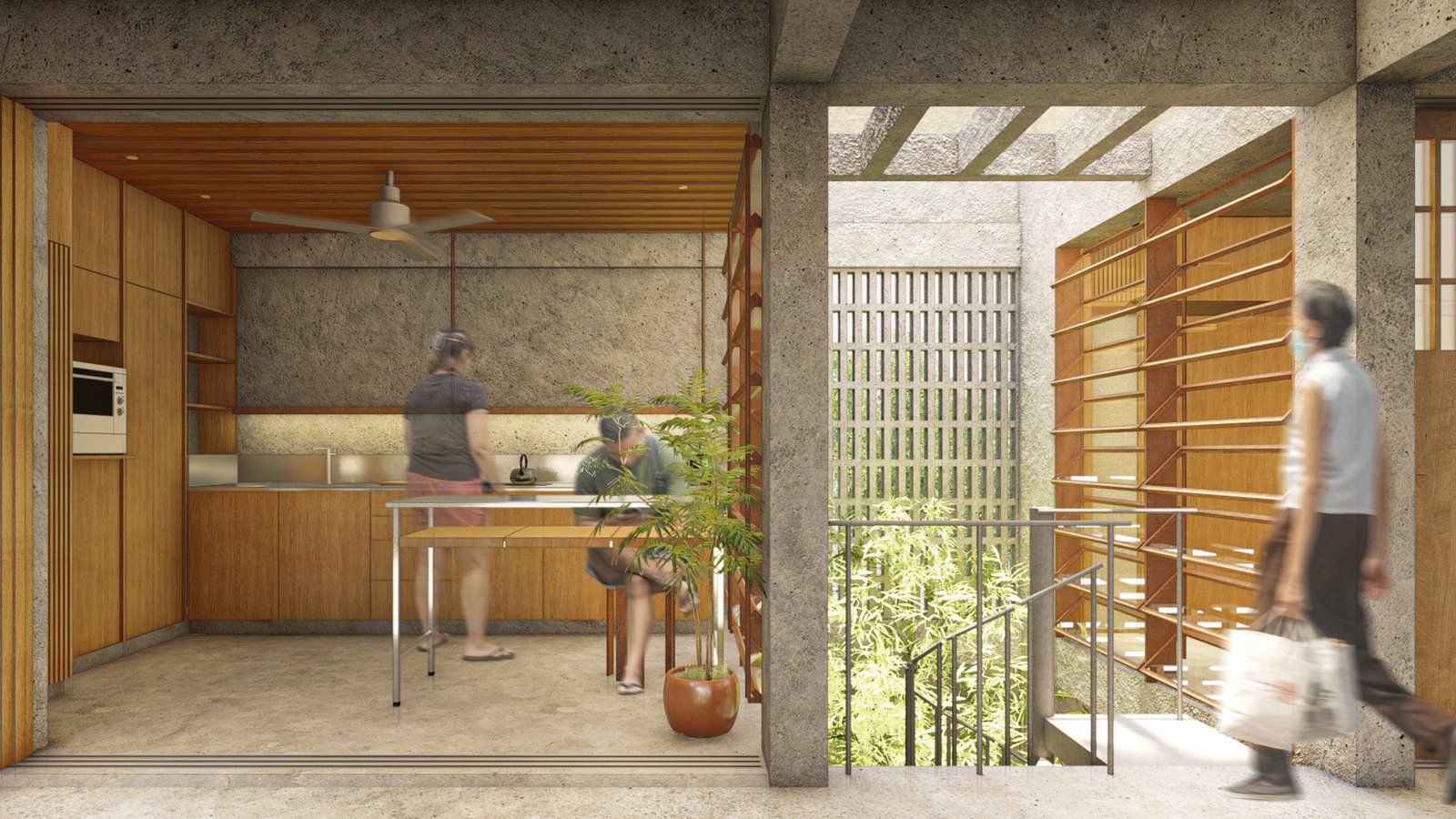

Mede, this is your first WAF shortlist appearance. As an emerging practice, what does this recognition mean for you?
Mede Studio: This is a dream come true for us. We’ve been following the competition ever since Sir Manny Miñana was shortlisted in 2014, back when we were college students. It always excited us to see which projects made the shortlist. And every time, we felt proud that Filipino design was being recognized internationally. That became a source of inspiration to always give extra effort in fulfilling every design brief, as students then and as professionals now.
Limlim is also our first official commission at Mede Studio. It began as a recommendation from a trusted collaborator and friend. But the project had long been on our client’s mind; he sees it as his life’s mission. He previously rented a yoga studio before the pandemic and is now establishing his own institute. We’re still in awe of the trust he placed in us, especially since we had no built work at the time and were both fresh out of our licensure exams. It was a rare first project, as most architects begin with houses. So, we took it seriously, did pre-design research for the site’s unique conditions, and orchestrated solutions to help the building support his mindfulness programs.
We’re filled with excitement to present this very special project at the World Architecture Festival this November. The shortlist news came just days before the construction groundbreaking, so we were thrilled to celebrate that moment with our client. It’s an honor to represent the Philippines—you don’t get that chance often. We’re also eager to learn from the presentations of fellow Filipino and international designers.
Putting your work out there and competing is a scary thought. But gaining insight from fresh eyes, especially throughout the WAF preparation process, has helped us see what we’re doing right and where we can improve. Being shortlisted in an international competition is truly validating for a young practice. It feels like approval from peers in the industry. We intend to make the most of this opportunity, and we’re endlessly grateful to everyone who helped make it happen.
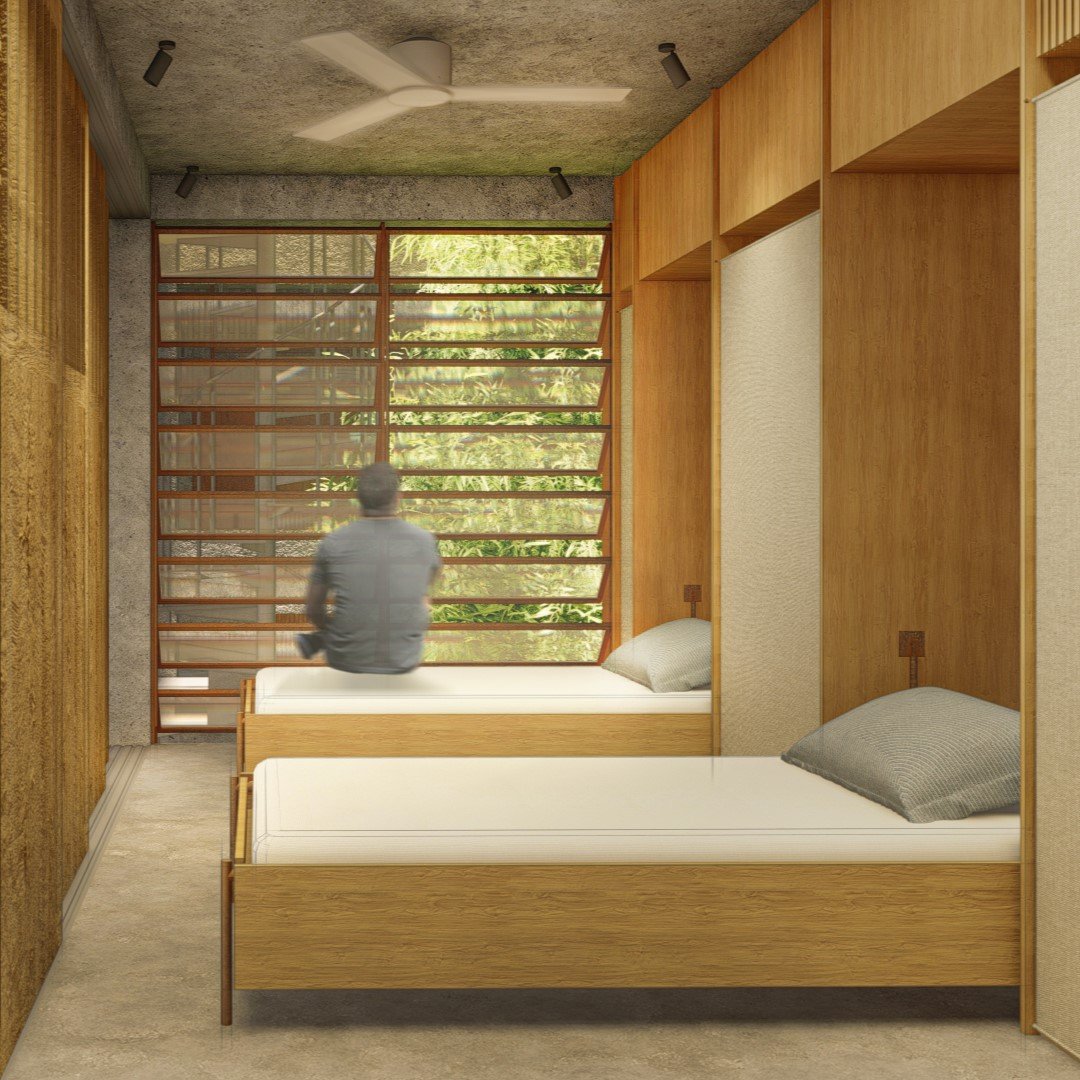

Suppose you could plant one question for the WAF jurors to ask about your project in the crit session, what would it be?
Mede Studio: I wish they would ask about who the client is, what he does, and why he’s building this mindfulness institute in the middle of the city. We intend to preface this already, but what makes the project unique is his presence and unwavering vision. We believe that for architecture as special as this to happen, an architect needs to meet their ideal client—and we did! Who would’ve thought that this project, with all the care poured into it, would also care for us, giving us a chance to share it with the world. •
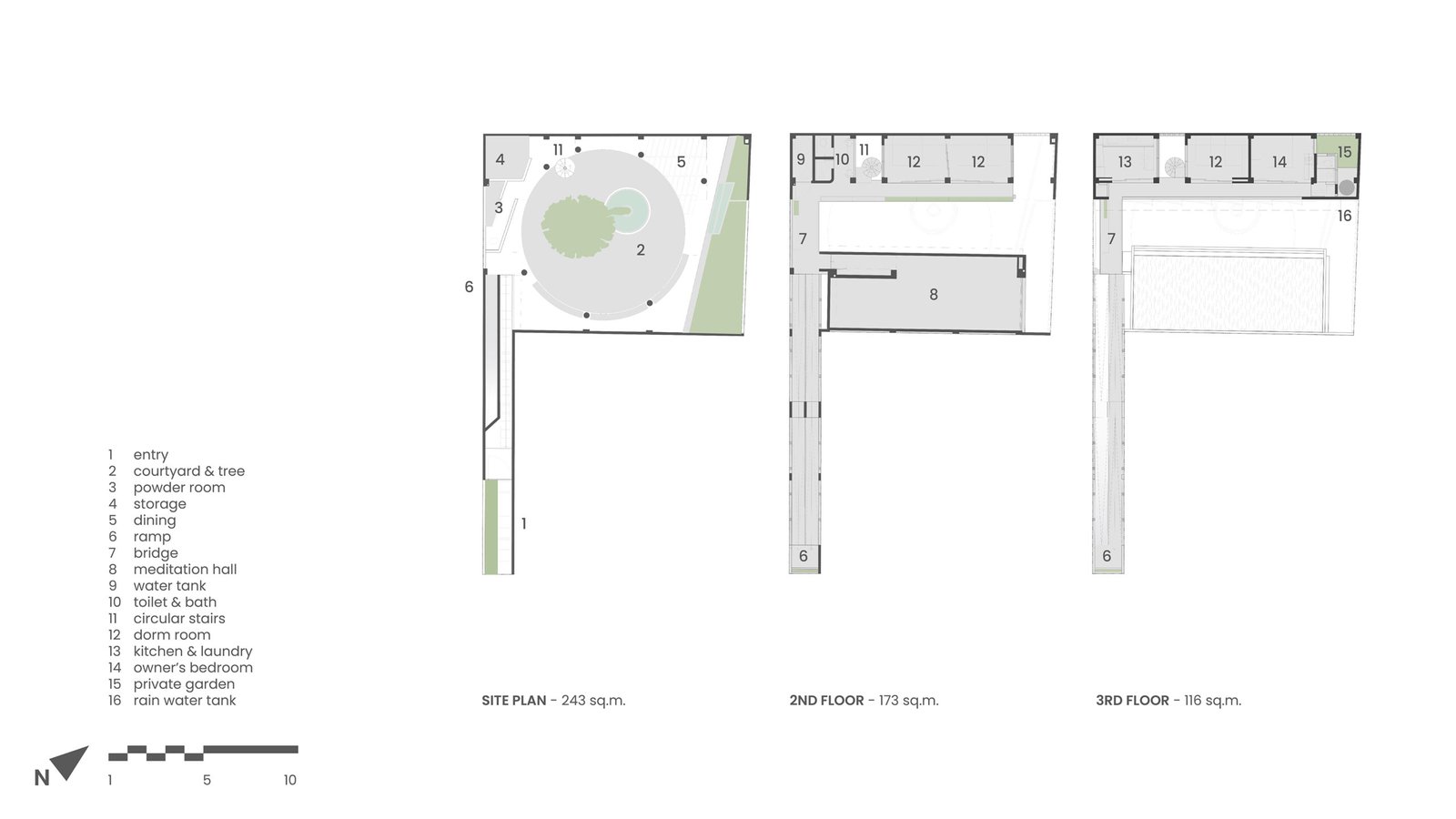
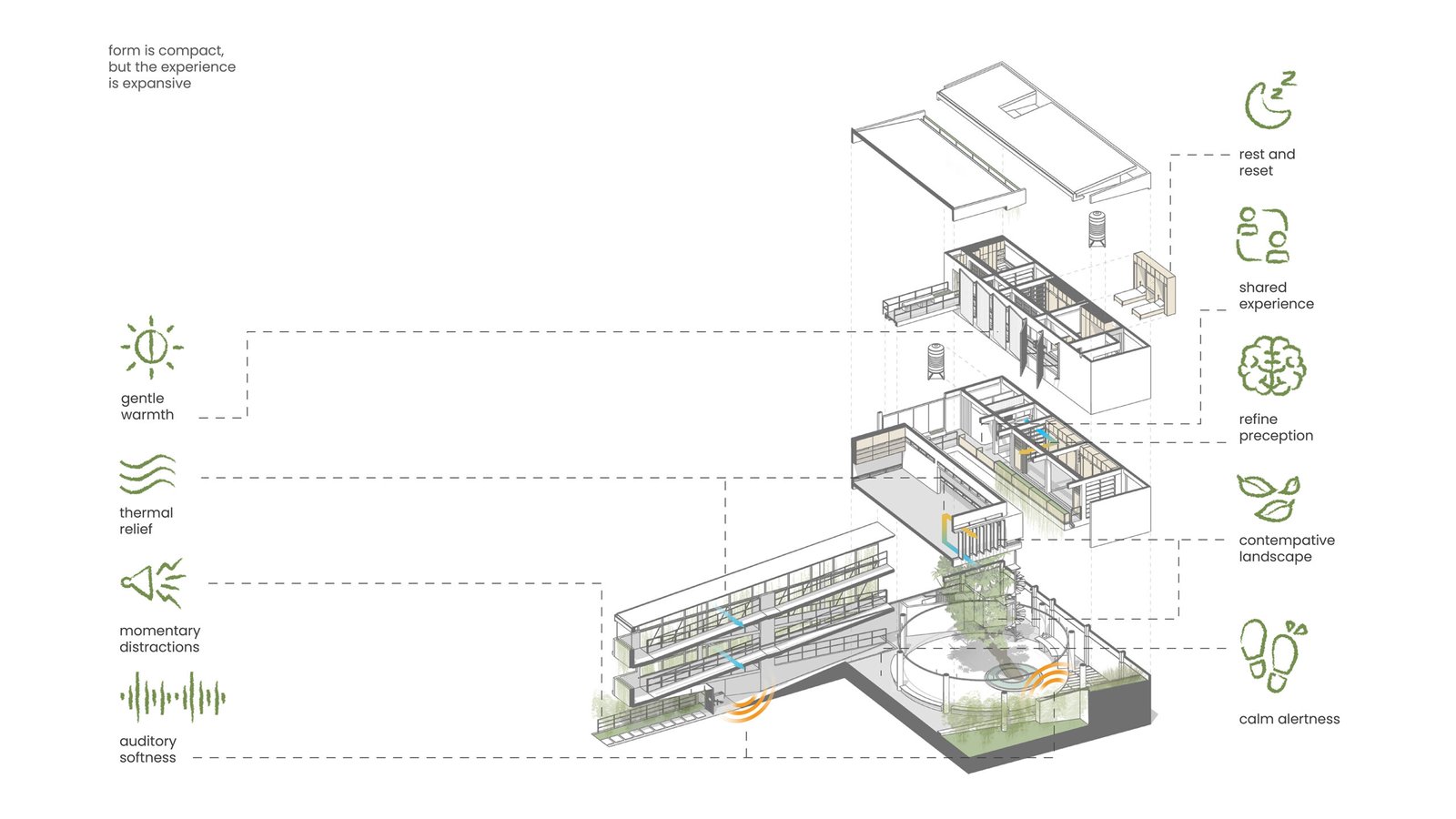


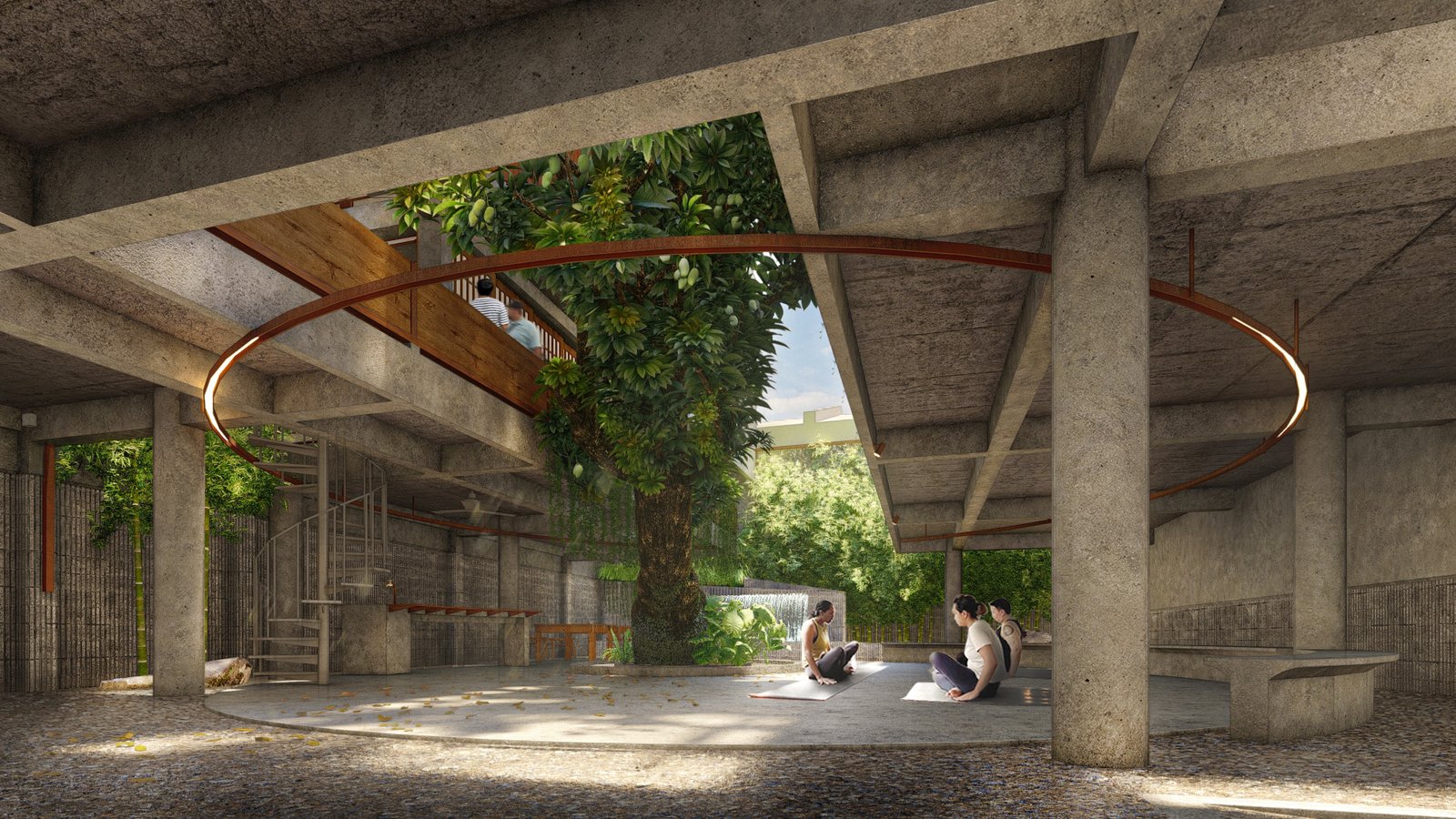



One Response